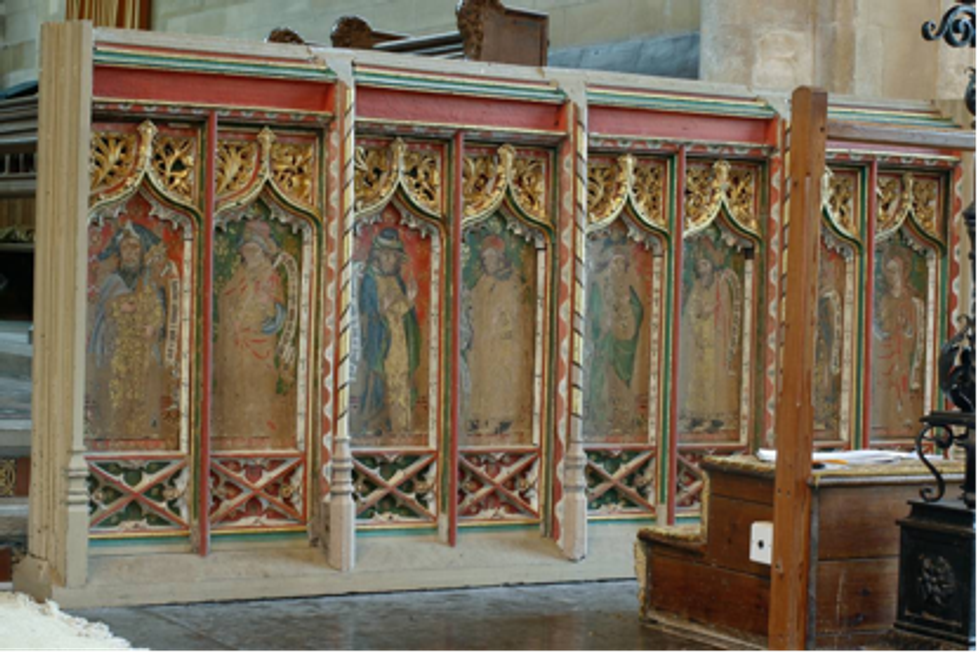In an art lecture a few weeks ago, my professor talked about the usage of complementary color schemes in movies. He went on and on about the significance of red and green in a French film that I don't remember the name of. During that lecture, I couldn't get past the fact that red and green are Christmas colors. I probably would avoid using that color scheme unless it's December.
I've grown up strongly associating red and green with Christmas, but I never understood why. Who picked these colors out? Why is this a thing? Out of curiosity, I did some research about how this festive color palette came to be.
Dr. Spike Bucklow, a Cambridge research scientist, says that these colors were used on the majority of medieval rood screens from the 14th to 16th centuries. These screens were used to separate the nave from the chancel of churches. They were painted by Flemish immigrants or traveling English and European artists who worked together.
Even though the colors depended on pigment availability, the colors likely were given symbolic meaning by the painters. He suggested that the colors marked different areas of the church and which churchgoers sat in what area. Years later, the Victorians must have noticed the colored panels while restoring medieval churches and chose to adopt the color scheme for Christmas.
While medieval rood screens may have inspired the Victorians, the colors may have gained symbolic meaning in pre-Christian Europe. Ancient cultures worshiped evergreen trees and holly because they could survive the harshest winters. Green was known as the color of life. At feasts celebrating the winter solstice and rebirth of the sun, holly was woven into wreaths in Rome. In the fourth century, when the church decided to celebrate Christ's birth on Dec. 25, holly was adopted as a decoration for the holiday.
Red likely came from the red berries found on holly. Ancient cultures were fascinated by how a plant could produce fruit in the winter. When the church began using the plant for Christmas, it replaced the pagan symbolism with ideas of beauty, truth, and power. Furthermore, red also represented Christ's blood as he died on the cross.
There you have it. Victorians likely adopted red and green from medieval rood screens. Then the church was inspired by holly and ancient beliefs. Basically, green represents life and red represents Christ's sacrifice.
However, there has to be more information out there outlining the specifics of how these colors were chosen. Red and green mark a major religious holiday and therefore must have an even deeper meaning.























